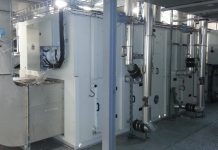In today’s interconnected world, LAN (Local Area Network) cables serve as the foundation of modern communication networks, allowing for the seamless interchange of data between businesses, residences, and institutions. As the demand for connectivity grows, LAN cable manufacturers play an important part in meeting it by creating high-quality cables that provide dependable and fast network connections.
However, as we pursue technical improvement and network performance, it is critical to recognize the environmental impact of LAN cable manufacture. Considering environmental considerations in LAN cable manufacture is critical; it aligns with worldwide initiatives to combat climate change and promote sustainable development. LAN cable Manufacturers can lower their carbon footprint and environmental impact by implementing eco-friendly techniques.
Why Is The Quality Of LAN Cables Important?
The quality of LAN cables is critical for providing dependable and high-performance network connections. Poor-quality cables can cause signal deterioration, transmission mistakes, and network downtime. High-quality cables provide superior conductivity, interference shielding, and durability, resulting in improved network stability and reduced troubleshooting and maintenance requirements.
Sustainable Practices in LAN Cable Manufacturing
LAN connections are critical to ensuring seamless network communication. However, the creation of LAN cables, like any other manufacturing process, can have environmental consequences. LAN cable makers have recognized this difficulty and are increasingly using sustainable measures to reduce their environmental imprint. This article dives into the many ways that LAN cable manufacturers manage environmental problems during their manufacturing processes.
Sustainable Sourcing Of Raw Materials
One of the key initiatives that LAN cable manufacturers take to reduce their environmental impact is to source raw materials sustainably. This entails obtaining copper or fiber optic materials from sources that follow responsible mining and extraction techniques. Additionally, producers may choose recycled copper or fiber optic components to lessen the demand for virgin resources and trash.
Energy-Efficient Manufacturing Processes
LAN cable manufacturing facilities utilize a lot of energy, especially during extrusion and insulating procedures. Manufacturers invest in energy-efficient equipment and technology to lower their carbon footprint and emissions. This includes using high-efficiency extruders, LED lighting systems, and improved heating and cooling systems to save energy throughout the manufacturing process.
Waste Reduction and Recycling Initiatives
Waste generation is a major challenge in manufacturing processes. LAN cable manufacturers use waste reduction tactics to reduce material waste during production and promote recycling programs. Scrap materials generated during the production process, such as surplus insulation or copper wire, are collected and recycled to help reduce landfill waste. Manufacturers may collaborate with recycling centers to ensure the proper disposal of end-of-life cables.
Water Conservation Measures
Water is another important resource used in LAN cable production operations, particularly for cooling and cleaning. To reduce water usage and environmental impact, manufacturers adopt water conservation measures such as recycling and reusing water within their facilities. Advanced filtration systems are used to cleanse wastewater before it is discharged, ensuring environmental compliance and reducing pollution.
Implementation of Green Technologies
LAN cable makers are investing more in green solutions to lessen their environmental impact. This involves the use of renewable energy sources like solar and wind power to supplement or replace traditional energy sources. Furthermore, producers may use sustainable materials and bio-based polymers in cable insulation and packaging to reduce reliance on fossil fuels and non-renewable energy sources.
Lifecycle Assessments and Carbon Footprint Reduction
To better understand and manage their environmental impact, LAN cable manufacturers conduct lifecycle studies, which examine their products’ environmental footprint from raw material extraction to end-of-life disposal. By identifying hotspots and areas for improvement, manufacturers can apply targeted initiatives to minimize carbon emissions and improve overall sustainability. This could involve improving shipping logistics and increasing product lifetime and recyclability.
Collaboration and Certification
LAN cable makers work with industry stakeholders, government agencies, and environmental organizations to promote sustainability and best practices. Many manufacturers seek certifications and take part in voluntary sustainability programs to demonstrate their commitment to environmental responsibility. Manufacturers can increase openness and accountability in their sustainability initiatives by complying with strict standards and reporting requirements.
Sum Up
LAN cable manufacturers are actively addressing environmental concerns in their manufacturing processes using a variety of sustainable approaches. Manufacturers who practice responsible sourcing reduce their environmental impact and contribute to a more sustainable future. As the demand for connectivity grows, the importance of incorporating environmental factors into LAN cable manufacture will only increase, ensuring that networks remain linked without jeopardizing the planet’s health.









